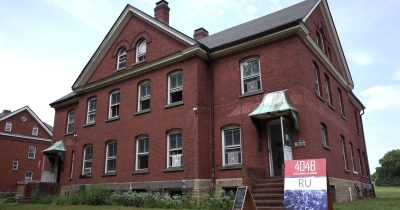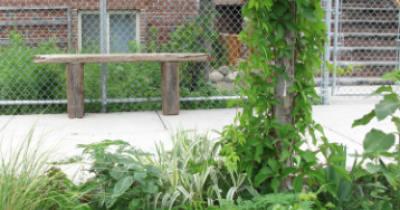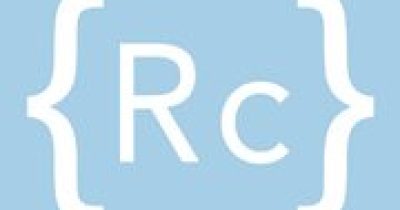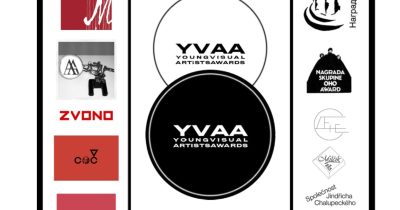Tina Konec, Maess Anand Drawing as an Organism
KiBela / MMC KIBLA 10 May–8 June 2019
MMC KIBLA / KiBela, space for art, Maribor, Slovenia Open on weekdays between 9 a. m. and 10 p. m., Saturdays between 4 p. m. and 10 p. m.
The exhibition is conceived as a conversation between two drawing artists who perceive the drawing as a living organism and the subject of scientific and emotional exploration, which they develop to the point of visual culmination. On display is an oeuvre of drawings created in a traditional, analog way, while still retaining singularity of execution. Both artists work in the same medium, and both engage in the depiction of the microcosm of cells, or crystals. Maess Anand portrays the micro-realm of a man fighting death, while the works of Tina Konec rep- resent the contrast of various micro-lives within the natural world. Maess’s drawings of malignant tumors are highly expressive, she uses full-toned hues of red, which warn about the potential reality of danger already from a distance. Tina Konec’s drawings, on the other hand, are monochromatic, and thereby softer; in terms of execution, they create the impression of floating in space. Polish artist Maess Anand uses her art to reflect on the topic of the modern disease of cancer, the malig- nancy that remains, in spite of constant advancements in medicine, one of the deadliest diseases of the 21st century. The oldest documented cases of cancer go as far back as ancient Egypt, and it was Hippoc- rates who first named the disease karkinos, the Greek word for crab, which came from the appearance of the cut surface of a solid malignant tumor, with the veins stretched on all sides as crab’s feet. In medical terms, a malignoma is the result of mutations in genes that regulate cell division; the typical uncontrolled cell proliferation of the mutated, cancerous cells consequently disables the growth of healthy cells, which are necessary for tissue regeneration and for the general functioning of a healthy organism. The cycle of drawings by Maess Anand was dubbed Abnormal results. It depicts cell mutations in the form of cancerous growths, malignant tumors and metastasis with typical disorderly division and uncontrollable growth. Malignant cells can be studied with the help of microscopy, with modern imaging advancements including two-dimensional visualization- and 3D modeling software. Maess Anand makes good use of the scientific approach, which she applies to consider the ways in which something like cancer – i.e., something essentially associated with an individuum, with the individual body or organism – can be treated as a “unique digital media event”, visible only with the help of advanced modern-day technologies. Thus, the artist’s drawings imply organisms attacked by cancer. Simply, because in reality these images are invisible to the naked eye, and cannot actually be observed in nature: they are created exclusively through the use of sensitive techniques for sound manipulation, temperature measurements, and x-rays. She creates in the technique of watercolors and colored ink pens on paper, with the entire process leaning primarily against the traditional approach to constructing a drawing (in the sense of an art object), while at the same time she uses computerized data to layer the drawing, bringing it closer to scientific vivisection. To define the perspective, she uses 3D programs (otherwise used in design and architecture), which allows her to test a variety of different perspectives and, in turn, to create new forms. In spite of benefiting from the application of modern technologies, Maess Anand wishes to preserve the uniqueness and irreproducibility of the human hand gesture: she wants her drawings to be exact, organic, rather than a mechanic, or even mechanistic. She contemplates recent discoveries related to the treatment of cancerous diseases, to which she juxtaposes the populist discourse on cancer that fills the internet.
Her drawings and studies are named after cancer stages. We are entering, willingly and consciously, the world of oncology: the realm of metastases, histopathology findings or results, early-stage cancer, ductal carcinoma and thrombocytopenia – all with the purpose of confronting ourselves with the most unexpected treatment of some disease, which relies on emotions beyond the ruthless reality, and therefore aims to be primarily aesthetic, then investigative, and only on the level of direct confrontation with the art work (the concrete drawing), it aims to make the audience step out of their comfort zone and feel the artwork. One of the drawings, entitled Beautiful things are Afoot, is, for example, dedicated to the famous Polish artist Alina Szapocznikow (1926–1973), who survived the holocaust and later died of breast cancer. After her diagnosis, Alina, too, began making a “tumor” sculptures using resin, gauze, crumpled newspapers and photographs, i.e., layers of materials, which is replicated by Maess Anand’s practice. Anand is interested in the experience between the physical and emotional balance, between illness and health: that irreproducible “event”, which remains, through man’s transformation not only on the biological, but also on the psychological level, the joining momentum that brings together visual facts and the expressive images created by the artist.
Tina Konec is currently completing her post-graduate studies at the Academy of Fine Arts and Design in Ljubljana. In her own words, she has been creative ever since she can remember; draw- ing has been her favorite medium since the early stages and remains so to this day. She is a lover of nature, which must not be a coincidence: she was brought up in the countryside and sees and feels inspiration in nature, which represents to her a world of universal forms, marked by the everlasting topicality of natural form repetitions, whether in the micro- or macrocosm. Her beginnings were concerned with an artistic exploration of trees, treetops, branches; later on, she continued with crystals and fractals, which still retained the appearance of treetops, and it was only subsequently that she realized that these, too, were actually (subconsciously) drawing on her home environment, which was surrounded by conifers, pine trees and cypresses. The works of Tina Konec today are also inspired by abstract photography: her camera catches selected views of treetops, formulated like segments which regain the abstract form each time, some repeated universality of form. Natural formations and physical phenomena are factual, they are not some kind of abstract fictitiousness – the universality of form is abstracted from the subject matter, whereby it becomes virtually spaceless and timeless, according to the artist. She adds that she likes to hear people’s commentaries about how her drawings remind them of the universe, of the creases running across the palms of their hands, of water currents, clouds, mists, or various other natural phenomena. The motif in her works remains the same, but is enhanced each time with each new body of work, both artistically as well as emotionally. The conclusion of a creative cycle remains unpredictable and usually occurs only when the artist “feels the call” of a new series of drawings. Tina Konec creates series of drawings, which she continually upgrades based on actual observations of treetops – whether in the early morning mist, or in the evening twilight, – and documents the process by means of photographs, which she then represents in her images as a crystallization of universal forms. It is precisely this synthesis of the individual into the general, recognizing the forest from a multitude of individual trees (i.e., form beyond mere content), that leads, in its extreme stage, even to iconography, or the symbolic depiction of some universal form. For Tina Konec, creating a drawing is a lengthy, meditative and intimate process, which is why her works display orderliness, equilibrium and symbiosis of depicted forms. She is motivated by the minimum means required to produce the end product – an artistic super- addition. The universality of drawing has always relied on it being free from any kind of limitation. The technique of ink and/or pencil on paper, simple and quite elementary at first glance, still carries the potential for innovation, despite its traditional nature. After all, this has been confirmed by the history of art and the myriad of artists who have devoted their particular attention to the medium of drawing. Pencil or ink allows for the minimalism of colors, and at the same time for a powerful visual effect. The pencil produces a metallic reflection and a light contrast, while the ink emphasizes the monochromaticity of the drawing and adds to the two dimensional, surface effect. All drawings by Tina Konec are based on lines, which are the foundation of every image. Apart from a visual articulation of nature, her drawings also explore the relationship between the positive and the negative by applying photographic materials and methods, as well as the ratio between fullness and emptiness. She enhances these techniques by using various kinds of formats, and the absence of frames enables even greater flexibility of the universal form, and thereby a departure from conceptual formalism. Her drawings offer endless possibilities for spatial arrangement, thus bringing an added value to the visual effect, the element of surprise. Last year, the artist began creating with tracing paper; the highly porous material enables her drawings to become even cleaner. Tracing paper as such adds to the transparency of the set-up, creating the impression of blurriness, alluding to natural phenomena such as morning dew or autumn fog. Layers of tracing paper also enable endless variations and combinations of gallery layouts, which Tina Konec puts to good use: to her, the gallery space is a research lab for depicting the microcosm of crystallized cells or minerals, to which we as visitors are (exceptionally) invited. Crystallization as a process, in which basic parts are spatially arranged in a specific way, creates a typical structure. In nature, crystallization occurs when substances pass from one physical state to another and can take on various forms, which is something the artist tries to pursue in her drawings. The visitor is thus confronted with a sense of being immersed in the space, the soft forms only adding to the effect of relaxation.
The exhibition Drawing as an Organism features the works of two young award-winning drawing artists, who have knowingly chosen a path of “stubborn” persistence in developing and upgrading the traditional drawing. Maess Anand employs modern technology to add to the spatial effect of her works and enable visual access to otherwise invisible microfibers, whereas Tina Konec uses a photographic template to create a minimalist work of art in the traditional line drawing technique. Maess’s work calls attention to the markedly segregational view on life, which is essentially different for sick and healthy people. In the case of cancer patients, this relationship is even more complex, mostly due to the still vague terminology of treatment and consequently the cure rate. The artist’s goal is a Cartesian one: it is an attempt at approaching the understanding of an otherwise scary reality by means of applying the power of artistic representation, an attempt at transgressing the earthly by means of an interdisciplinary adaptation of reality.
The works of Tina Konec are marked, on one side, by her enthusiasm over cosmic creation and her sublime realization of the fragmented nature, and thus of the endless possibilities of the shapes of universe. Her creative starting point is represented by forms which may well be versatile (they are reminiscent of tree trunks or widespread treetops), however, it is only beyond their formal delineation (which is achieved by means of the abstract white, or dark drawing base, without frames, freed from any significance) that they truly come alive. Form becomes tangible, so to speak; enhanced with meditative intuition, it altogether establishes an additional social, in most cases intimate, dimension.
Nina Jeza, Artists&Poor’s
(translation Helena Fošnjar)
Biographies and artists’ statements
Tina Konec (1992) graduated in painting from the Academy of Fine Art and Design at the University of Ljubljana in 2015, under the mentorship of Professor Zmago Lenárdič. She is finishing her post-graduate studies in painting at the same institution, under Tugo Šušnik. Since 2017, her works have been shown in several solo and group exhibitions home and abroad, including exhibitions at the Bežigrad Gallery 1, the Ravnikar Gallery Space, Insula Gallery, Kvartirna hiša, and the City Gallery Fonticus in Croatia. In 2018, she received the Grand Prix at the 53rd International Painting Ex-Tempore in Piran, as well as the Grand Prix at the 25th International Painting Ex-Tempore in Grožnjan.
In her works, several components are intertwined, which all at the same time construct the final appearance of the creation. She builds the selected medium, the drawing, to the extent that it becomes an independent and complete work of art. The central motif – treetops, is more or less abstracted, but she always remains in the domain of both, figurative and abstract drawing. Trees are her core motif, through which she attempts to achieve all other natural forms from the micro and macro worlds, proving that everything in this world is interconnected. Interpretation is left to the viewer. Her drawings touch on the issue of the relationship between fullness and emptiness, between positive and negative, between the abstract and the figurative, between light and dark, between organic and geometric … She always creates in series, which is testified not only by the consistency of technical execution, but also in terms of the gallery set-up. The latter is always fluid, defined by the artworks themselves, as well as by the exhibition space and current tendencies. The possibilities are endless, which means that her work is never entirely complete or fully declared. She places great emphasis on technical execution, as she always try to achieve a larger, never before seen effect and innovation through simple means.
Maess Anand is a Polish artist based in Warsaw. She is a MFA graduate from the Academy of Fine Arts in Warsaw and recipient of a scholarship at the Escola Superior de Artes e Design in Porto, Portugal. In 2012, Maess was nominated to the Grand Prix at the FID Prize Paris, and in 2013 she was shortlisted to the Strabag International Art Award in Vienna, Austria. Amongst others, she exhibited at the Plumba Contemporary Art, Porto (2006), Residencia Corazón, La Plata, Buenos Aires (2008), Museo di Santa Cecilia in Rome (2010), CCA Ujazdowski Castle in Warsaw (2010), Program Gallery in Warsaw (2011), Wroclaw Contemporary Museum (2013), Galeria Miejska Arsenal in Poznan (2013), BWA Sokól in Nowy Sacz (2013), The Starak Family Foundation in Warsaw, Drawing Center in New York (2014), Polish Institute in Budapest (2015), Kasia Michalski Gallery in Warsaw (2015), Trestle Gallery in New York (2016) and at Biennale de la Biche on deserted island near Guadeloupe (2017). Her drawings were presented in Vice Magazine, FUKT Magazine for Contemporary Drawing and The Lancet Oncology. Residencies include Leipzig International Art Programme (2014) Virginia Center for Creative Arts (2017) and The Corporation of Yaddo (upcoming). With Alex Urso, Maess curated Biennale de La Biche; the smallest biennale in the world held on deserted island near Guadeloupe. She was event reviewed by The Guardian, Hyperallergic, Artnet, Art Review, Observer (2017).
Maess’s works examine organisms attacked by cancer. Using scientific material that involves cancer-related databases, microscopic views, histopathology images, Kaplan-Meier curves, 2D and 3D modeling, the artist combines these visual facts about cancer into expressive images in order to create something meaningful and emotionally insightful. Of interest is both physiologic response but also mental outcome of such suffering. Specifically, how the disease changes the lives of patients and people closest to them (especially how the perception of time changes for a patient); how the body changes on a tissue level when affected by cancer, how the groundbreaking oncology treat-
Tina Konec, Maess Anand Drawing as an Organismments change the way that cancer is perceived in culture.




